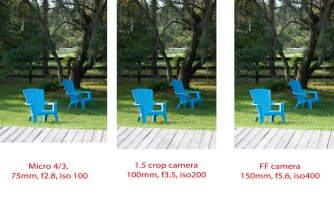If you're going to scold me about basic physics, then don't start by erroneously assuming that the imaging sensor is looking through the lens. It isn't. It's a recording device seeing an image that the lens projects onto it. Nothing more. The image circle is projected at a fixed size, which doesn't change, and the size of the imaging sensor means that it is recording a smaller portion of that image circle. The image isn't somehow magically concentrated onto the sensor as some people seem to think. By the thin argument of "relative" aperture, the lens isn't f/2.0 for full frame because the image circle is larger than what a full frame sensor sees as well. As well, if we go ahead and accept that the sensor is looking out through the lens, and that the size of the aperture carries meaning relative to the size of the imaging sensor, wouldn't a smaller imaging sensor against the same size aperture make it seem relatively larger? I only say this to make a point. Don't answer, because my same argument applies - it's flawed logic, just like everything else. The lens optics, focal length, and aperture are unchanged regardless of what you put them on. The variable is in how much of the image created by that lens is seen by the sensor. Trying to make it anything more than that is fundamentally incorrect. And the overcomplicated arguments that stem out from those flawed assumptions also don't hold up.


